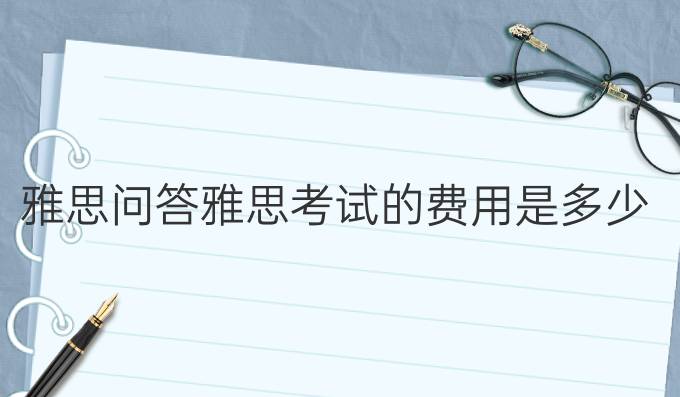
Passage 3
Learning lessons from the past
A
Many past societies collapsed or vanished, leaving behind monumental ruins such as those that the poet Shelley imagined in his sonnet, Ozymandias. By collapse, I mean a drastic decrease in human population size and/or political/economic/social complexity, over a considerable area, for an extended time. By those standards, most people would consider the following past societies to have been famous victims of full-fiedged collapses rather than of just minor declines: the Anasazi and Cahokia within the boundaries of the modem US, the Maya cities in Central America, Moche and Tiwanaku societies in South America, Norse Greenland, Mycenean Greece and Minoan Crete in Europe, Great Zimbabwe in Africa, Angkor Wat and the Harappan Indus Valley cities in Asia, and Easter Island in the Pacific Ocean.
B
The monumental ruins left behind by those past societies hold a fascination for all of us. We marvel at them when as children we first learn of them through pictures. When we grow up, many of us plan vacations in order to experience them at first hand. We feel drawn to their often spectacular and haunting beauty, and also to the mysteries that they pose. The scales of the ruins testify to the former wealth and power of their builders. Yet these builders vanished, abandoning the great structures that they had created at such effort. How could a society that was once so mighty end up collapsing?
C
It has long been suspected that many of those mysterious abandonments were at least partly triggered by ecological problems: people inadvertently destroying the environmental resources on which their societies depended. This suspicion of unintended ecological suicide (ecocide) has been confirmed by discoveries made in recent decades by archaeologists, climatologists, historians, paleontologists, and palynologists (pollen scientists). The processes through which past societies have undermined themselves by damaging their environments fall into eight categories, whose relative importance differs from case to case: deforestation and habitat destruction, soil problems, water management problems, overhunting, overfishing, effects of introduced species on native species, human population growth, and increased impact of people.
D
Those past collapses tended to follow somewhat similar courses constituting variations on a theme. Writers find it tempting to draw analogies between the course of human societies and the course of individual human lives - to talk of a society's birth, growth, peak, old age and eventual death. But that metaphor proves erroneous for many past societies: they declined rapidly after reaching peak numbers and power, and those rapid declines must have come as a surprise and shock to their citizens. Obviously, too, this trajectory is not one that all past societies followed unvaryingly to completion: different societies collapsed to different degrees and in somewhat different ways, while many societies did not collapse at all.
E
Today many people feel that environmental problems overshadow all the other threats to global civilisation. These environmental problems include the same eight that undermined past societies, plus four new ones: human-caused climate change, build up of toxic chemicals in the environment, energy shortages, and full human utilisation of the Earth's photosynthetic capacity. But the seriousness of these current environmental problems is vigorously debated. Are the risks greatly exaggerated, or conversely are they underestimated? Will modem technology solve our problems, or is it creating new problems faster than it solves old ones? When we deplete one resource (eg wood, oil, or ocean fish), can we count on being able to substitute some new resource (eg plastics, wind and solar energy, or fanned fish)? Isn't the rate of human population growth declining, such that we’re already on course for the world's population to level off at some manageable number of people?
F
Questions like this illustrate why those famous collapses of past civilisations have taken on more meaning than just that of a romantic mystery. Perhaps there are some practical lessons that we could learn from all those past collapses. But there are also differences between the modem world and its problems, and those past societies and their problems. We shouldn't be so naive as to think that study of the past will yield simple solutions, directly transferable to our societies today. We differ from past societies in some respects that put us at lower risk than them; some of those respects often mentioned include our powerful technology (ie its beneficial effects), globalisation, modem medicine, and greater knowledge of past societies and of distant modem societies. We also differ from past societies in some respects that put us at greater risk than them: again, our potent technology (ie its unintended destructive effects), globalisation (such that now a problem in one part of the world affects all the rest), the dependence of millions of us on modem medicine for our survival, and our much larger human population. Perhaps we can still learn from the past, but only if we think carefully about its lessons.
Questions 27-29
Choose the correct letter, A, B, C or D.
27 When the writer describes the impact of monumental ruins today, he emphasizes
A the income they generate from tourism.
B the area of land they occupy.
C their archaeological value.
D their romantic appeal.
28 Recent findings concerning vanished civilisations
A have overturned long-held beliefs.
B caused controversy amongst scientists.
C come from a variety of disciplines.
D identified one main cause of environmental damage.
29 What does the writer say about ways in which former societies collapsed?
A The pace of decline was usually similar.
B The likelihood of collapse would have been foreseeable.
C Deterioration invariably led to total collapse.
D Individual citizens could sometimes influence the course of events.
Questions 30-34
Do the following statements agree with the views of the writer in Reading Passage?
Write
YES if the statement agrees with the claims of the writer
NO if the statement contradicts the claims of the writer
NOT GIVEN if it is impossible to say what the writer thinks about this
30 It is widely believed that environmental problems represent the main danger faced by the modern world.
31 The accumulation of poisonous substances is a relatively modern problem.
32 There is general agreement that the threats posed by environmental problems are very serious.
33 Some past societies resembled present-day societies more closely than others.
34 We should be careful when drawing comparisons between past and present.
Questions 35-39
Complete each sentence with the correct ending, A-F, below.
Write the correct letter, A-F.
A is not necessarily valid. B provides grounds for an optimistic outlook. C exists in the form of physical structures. D is potentially both positive and negative. E will not provide direct solutions for present problems. F is greater now than in the past. |
35 Evidence of the greatness of some former civilisations
36 The parallel between an individual's life and the life of a society
37 The number of environmental problems that societies face
38 The power of technology
39 A consideration of historical events and trends
Question 40
40 What is the main argument of Reading Passage 3?
A There are differences as well as similarities between past and present societies.
B More should be done to preserve the physical remains of earlier civilisations.
C Some historical accounts of great civilisations are inaccurate.
D Modern societies are dependent on each other for their continuing survival.
Answer Key:
27 D
28 C
29 A
30 YES
31 YES
32 NO
33 NOT GIVEN
34 YES
35 C
36 A
37 F
38 D
39 E
40 A
Talc Powder
A
Peter Brigg discovers how talc from Luzenac’s Trimouns in France find its way into food and agricultural products - from chewing gum to olive oil. High in the French Pyrenees, some 1,700m above sea level, lies Trimouns, a huge deposit of hydrated magnesium silicate - talc to you and me. Talc from Trimouns, and from ten other Luzenac mines across the globe, is used in the manufacture of a vast array of everyday products extending from paper, paint and plaster to cosmetics, plastics and car tyres. And of course there is always talc’s best known end use: talcum powder for babies’ bottoms. But the true versatility of this remarkable mineral is nowhere better displayed than in its sometimes surprising use in certain niche markets in the food and agriculture industries.
B
Take, for example, the chewing gum business. Every year, Talc de Luzenac France - which owns and operates the Trimouns mine and is a member of the international Luzenac Group (art of Rio Tinto minerals) - supplies about 6,000 tones of talc to chewing gum manufacturers in Europe. “We’ve been selling to this sector of the market since the 1960s,” says Laurent Fournier, sales manager in Luzenac’s Specialties business unit in Toulouse. “Admittedly, in terms of our total annual sales of talc, the amount we supply to chewing gum manufacturers is relatively small, but we see it as a valuable niche market: one where customers place a premium on securing supplies from a reliable, high quality source. Because of this, long term allegiance to a proven suppler is very much a feature of this sector of the talc market.” “Switching sources - in the way that you might choose to buy, say, paperclips from Supplier A rather than from Supplier B - is not an easy option for chewing gum manufacturers.” Fournier says. “The cost of reformulating is high, so when customers are using a talc grade that works, even if it’s expensive, they are understandably reluctant to switch.”
C
But how is talc actually used in the manufacture of chewing gum? Patrick Delord, an engineer with a degree in agronomics, who has been with Luzenac for 22 years and is now senior market development manager. Agriculture and Food, in Europe, explains that chewing gums has four main components. “The most important of them is the gum base,” he says. “It’s the gum base that puts the chew into chewing gum. It binds all the ingredients together, creating a soft, smooth texture. To this the manufacturer then adds sweeteners, softeners and flavourings. Our talc is used as a filler in the gum base. The amount varies between, say, ten and 35 per cent, depending on the type of gum. Fruit flavoured chewing gum, for example, is slightly acidic and would react with the calcium carbonate that the manufacturer might otherwise use as a filler. Talc, on the other hand, makes an ideal filler because it's non-reactive chemically. In the factory, talc is also used to dust the gum base pellets and to stop the chewing gum sticking during the lamination and packing process,” Delord adds.
D
The chewing gum business is, however, just one example of talc’s use in the food sector. For the past 20 years or so, olive oil processors in Spain have been taking advantage of talc’s unique characteristics to help them boost the amount of oil they extract from crushed olives. According to Patrick Delord, talc is especially useful for treating what he calls “difficult” olives. After the olives are harvested - preferably early in the morning because their taste is better if they are gathered in the cool of the day - they are taken to the processing plant. There they are crushed and then stirred for 30-45 minutes. In the old days, the resulting paste was passed through an olive press but nowadays it’s more common to add water and centrifuge the mixture to separate the water and oil from the solid matter. The oil and water are then allowed to settle so that the olive oil layer can be decanted off and bottled. “Difficult” olives are those that are more reluctant than the norm to yield up their full oil content. This may be attributable to the particular species of olive, or to its water content and the time of year the olives are collected - at the beginning and the end of the season their water content is often either too high or too low. These olives are easy to recognize because they produce a lot of extra foam during the stirring process, a consequence of an excess of a fine solid that acts as a natural emulsifier. The oil in this emulsion is lost when the water is disposed of. Not only that, if the waste water is disposed of directly into local fields – often the case in many smaller processing operations – the emulsified oil may take some time to biodegrade and so be harmful to the environment.
E
“If you add between a half and two per cent of talc by weight during the stirring process, it absorbs the natural emulsifier in the olives and so boosts the amount of oil you can extract,” says Delord. “In addition, talc’s flat, ‘platey’ structure helps increase the size of the oil droplets liberated during stirring, which again improves the yield. However, because talc is chemically inert, it doesn’t affect the colour, taste, appearance or composition of the resulting olive oil.”
F
If the use of talc in olive oil processing and in chewing gum is long established, new applications in the food and agriculture industries are also constantly being sought by Luzenac. One such promising new market is fruit crop protection, being pioneered in the US. Just like people, fruit can get sunburned. In fact, in very sunny regions up to 45 per cent of a typical crop can be affected by heat stress and sunburn. However, in the case of fruit, it's not so much the ultra violet rays which harm the crop as the high surface temperature that the sun’s rays create.
G
To combat this, farmers normally use either chemicals or spray a continuous fine canopy of mist above the fruit trees or bushes. The trouble is, this uses a lot of water - normally a precious commodity in hot, sunny areas - and it is therefore expensive. What’s more, the ground can quickly become waterlogged. “So our idea was to coat the fruit with talc to protect it from the sun,” says Greg Hunter, a marketing specialist who has been with Luzenac for ten years. “But to do this, several technical challenges had first to be overcome. Talc is very hydrophobic: it doesn't like water. So in order to have a viable product we needed a wettable powder - something that would go readily into suspension so that it could be sprayed onto the fruit. It also had to break the surface tension of the cutin (the natural waxy, waterproof layer on the fruit) and of course it had to wash off easily when the fruit was harvested. No-one’s going to want an apple that's covered in talc.”
H
Initial trials in the state of Washington in 2003 showed that when the product was sprayed onto Granny Smith apples, it reduced their surface temperature and lowered the incidence of sunburn by up to 60 per cent. Today the new product, known as Invelop Maximum SPF, is in its second commercial year on the US market. Apple growers are the primary target although Hunter believes grape growers represent another sector with long term potential. He is also hopeful of extending sales to overseas markets such as Australia, South America and southern Europe.
Questions 27-32
Use the information in the passage to match each use of talc power with correct application from A, B or C. Write the appropriate letters A-C in boxes 27-32 on your answer sheet.
NB you may use any letter more than once
27 Talc is used to increase the size of drops.
28 Talc is applied to reduce foaming.
29 Talc is employed as a filler of base.
30 Talc is modified and prevented sunburn.
31 Talc is added to stop stickiness.
32 Talc is used to increase production.
Questions 33-38
Complete the following summary of the paragraphs of Reading Passage, using no more than two words from the Reading Passage for each answer. Write your answers in boxes 33-38 on your answer sheet.
Spanish olive oil industry has been using talc in oil extraction process for about 33___ years. It is useful in dealing with difficult olives which often produce high amount of 34___ because of the high content of solid materials. When smaller factories release 35___, it could be 36___ to the environment because it is hard to 37___ and usually takes time as it contains emulsified oil. However, talc power added in the process is able to absorb the emulsifier oil. It improves the oil extraction production, because with aid of talc powder, size of oil 38___ increased. |
Questions 39-40
Answer the questions below using NO MORE THAN THREE WORDS from the passage for each answer.
Write your answers in boxes 39-40 on your answer sheet.
39 In which process is talc used to clear the stickiness of chewing gum?
40 Which group of farmers does Invelop intend to target in a long view?
Answer Key:
27 C
28 C
29 B
30 A
31 B
32 C
33 20
34 foam
35 waste water
36 harmful
37 biodegrade
38 droplets
39 Lamination and packing
40 Grape growers
.png)






